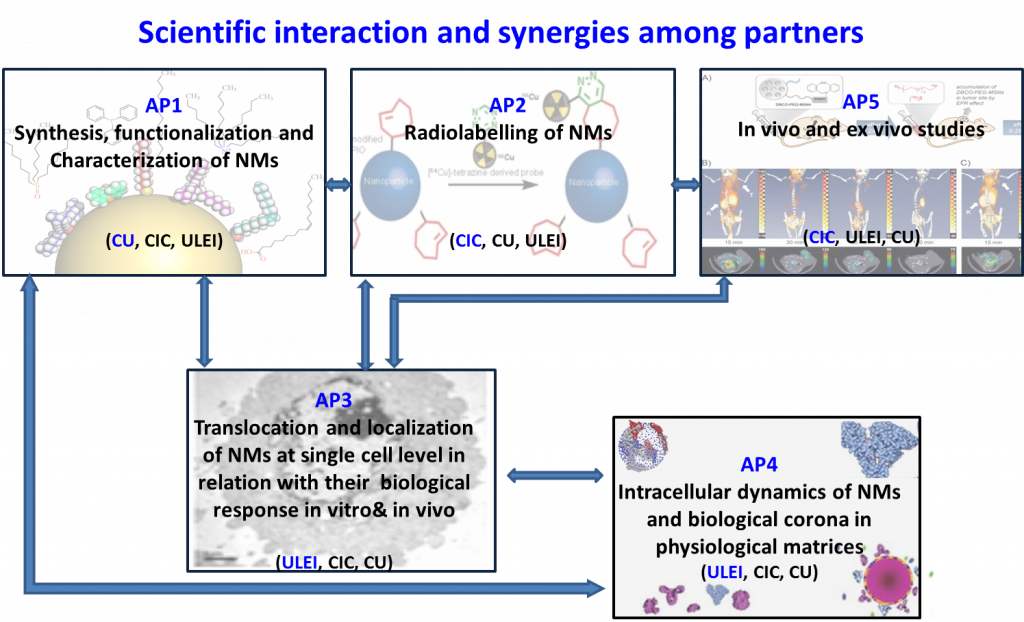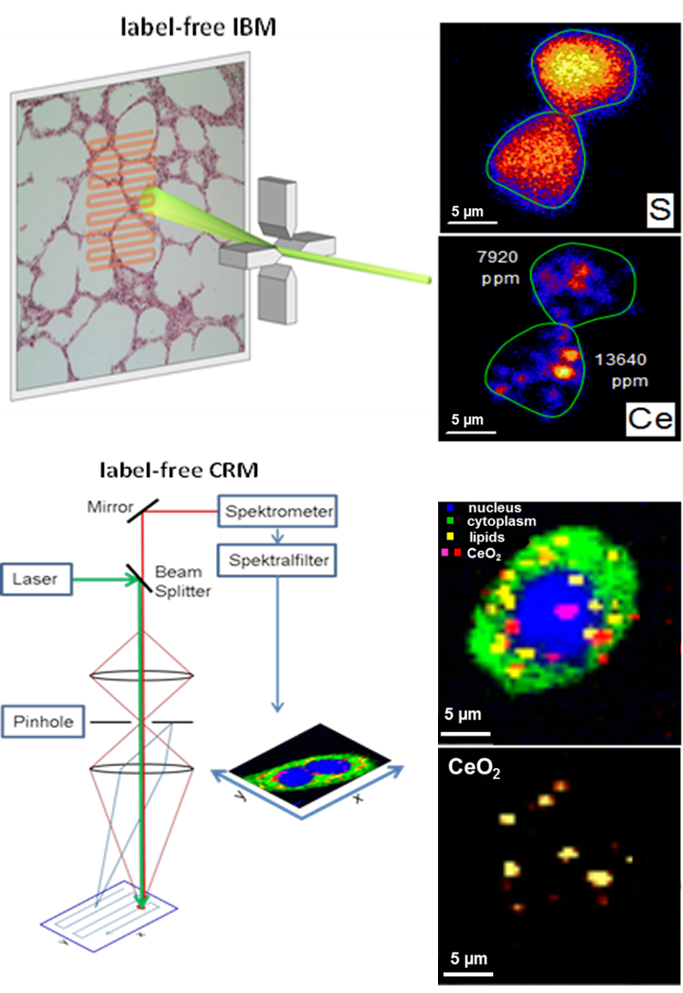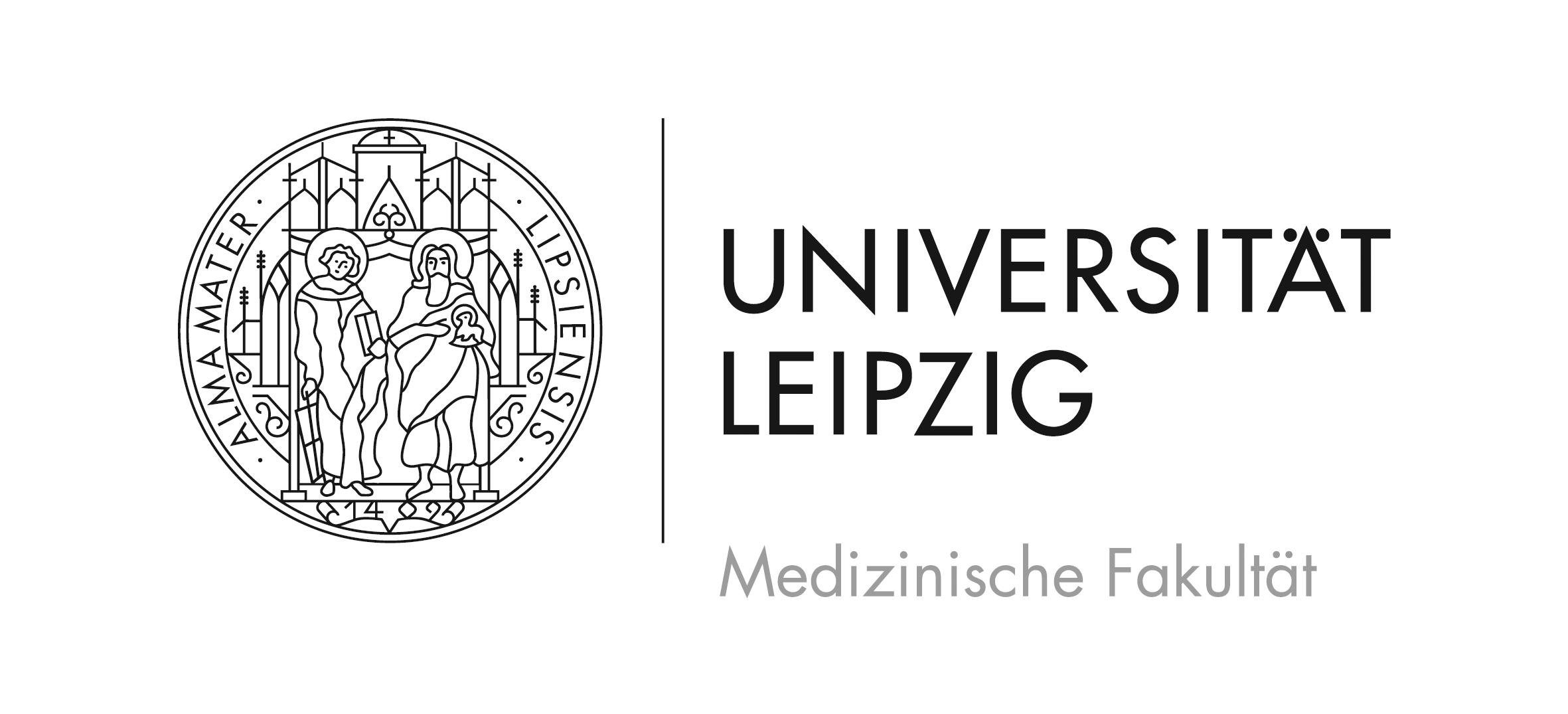Translocation, biological fate, stability and effective dose of engineered NMs for nanosafety studies (FATENANO)
Launched in May 2016. Duration: 3 years
The German part of project FATENANO is supported by the German Federal Ministry of Education and Research (BMBF) on the topic of „Safe Implementation of Innovative Nanoscience and Nanotechnology“ within the framework program FP7 ERA-NET SIINN. SIINN will bring together today’s fragmented research activities on the potential risks of engineered nanomaterials for environment, human health, and safety. http://www.siinn.eu/en/www.siinn.eu/
BMBF Grant No: 03XP0062
There is a strong need for a better understanding of the behavior and fate of nanomaterials at the cellular and body level. How the materials interact with biomolecules, the formation of a biological corona around the nanomaterials, their degree of aggregation and their degradation in biological fluids, both intracellularly and especially in vivo, are fundamental issues for gaining a deeper insight into the possible toxicity mechanism of nanomaterials and their impact on human health. Additionally, a proper determination of the dose of taken up nanomaterials per organ and the actual amount of nanomaterials adsorbed by the cells is also fundamental for further progress in nanotoxicology, especially for the development of a predictive toxicology.
The overall goal of the FATENANO Project is to achieve fundamental knowledge about translocation, uptake and the fate of NM on the cellular level as well as on the level of tissues and organs in relation to their physico-chemical surface properties and their NM-induced physiological answer. The fate of the NM, their aggregation, decomposition, dissolution, their interaction with biomolecules etc. will be investigated within as well as outside cells in vivo and ex vivo. For this purpose NM with desired surface characteristics will be fabricated and labelled as required by the various employed methods to clarify relevant mechanisms of nanotoxicity on the basis of the characteristics of the nanomaterials. The translocation and fate of NM in vitro and in vivo will be related to their properties and their interaction with biomolecules in the extra- and intracellular environment. This correlation will be discussed with regard to the related biological effects and modelled by means of in silico methods.
This unique combination of up to date space and time resolved imaging and dosimetric approaches opens up novel possibilities of monitoring the translocation and the fate of chemically rather different NM, such as metals metal oxides polymer particles, graphene and hybrid NM with specifically designed surface properties at the level of the whole organism, at tissue and at the cellular level. It becomes possible to quantify the NM organ load and the intracellular concentration of nanoparticles in vitro and in vivo. The methods, which will be used within this project, comprise Ion beam microscopy (µ-Rutherford backscattering, µ-particle-induced X-ray emission, scanning transmission ion microscopy), confocal and surface enhanced Raman microscopy in Germany, positron emission tomography, single-photon emission computed tomography, computed tomography and magnet resonance tomography in Spain. The results generated in the in silico, in vitro and in the in vivo investigations will be used to predict the toxic potential of nanoparticles from their properties and to develop strategies for a safe design of NM.
Molecular dynamics and Monte Carlo simulations of translocation, degradation and the interaction of nanoparticles with ligands and selected cellular receptors will be performed in parallel. The obtained simulation results will be validated on the basis of the derived experimental data with the aim to clarify possible mechanisms of nanotoxicity and to identify particle surface properties of toxicological concern.


Project partners:
Prof. Dr. Hendrik Heinz, Department of Chemical and Biological Engineering University of Colorado – Boulder, Colorado, U.S.A.



